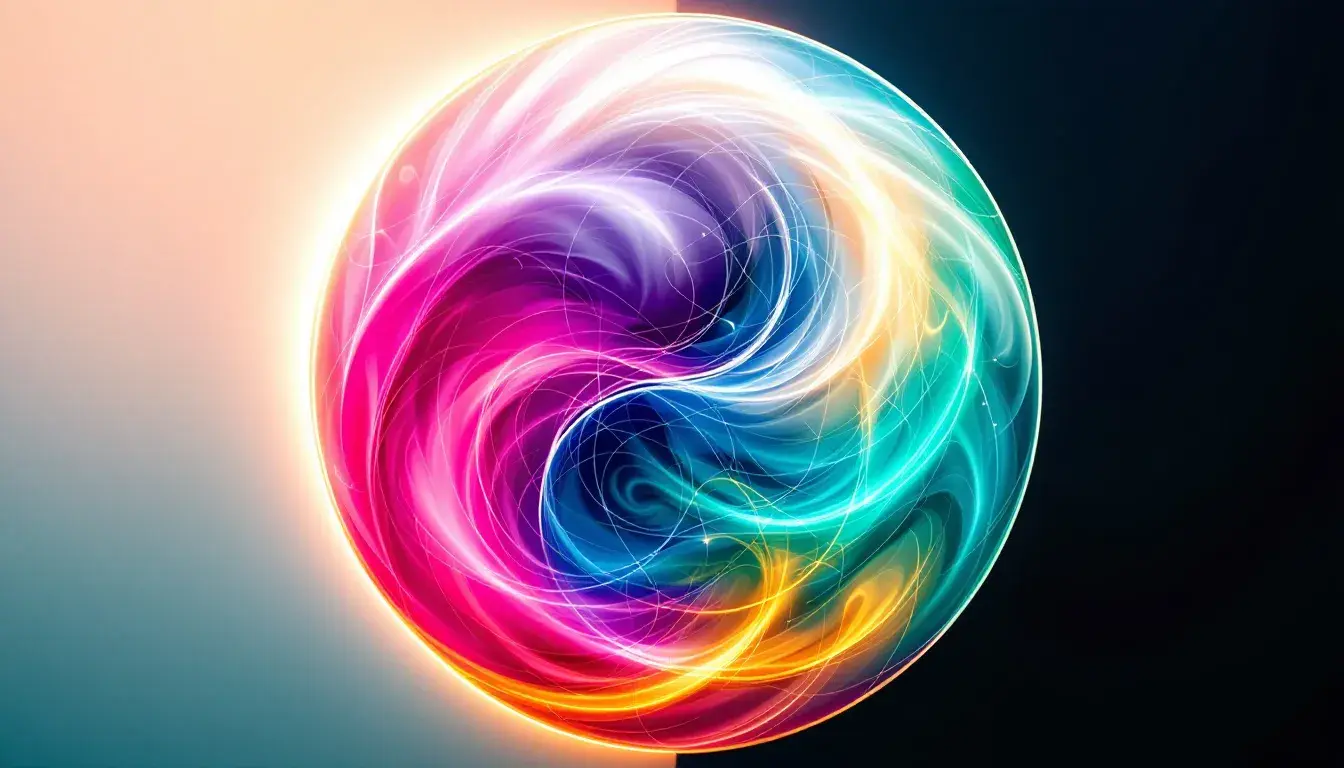
The Yin and Yang of Color: Exploring the Complementary Dominance
23 May 2025 · 6 min readColor, more than just visual stimulation, speaks volumes. It sets moods, strengthens brands, and shapes our environments. Palettes serve as blueprints for creativity, especially when searching for balance. This exploration looks into specific color groupings, seeing how they manage opposing energies – like the classic yin and yang. Complementary colors, which sit opposite each other on the color wheel, create a powerful tension. This push and pull of warm against cool, bright against muted, makes for interesting visual statements. The combinations draw the eye and leave lasting memories. We’ll examine several palettes, each showing a different way to handle this colorful balancing act. We consider what makes them work and how they can be used in daily life and design, showcasing different ways these combinations can affect how we feel and interact with the world around us. These mixtures create vibrant experiences, shaping spaces and influencing perceptions, offering new views on color and design.
Laundry Fresh
The "Laundry Fresh" palette presents an interesting take on cleanliness, moving beyond simple blues and whites. Here, a light mauve stands out against a bright green, while a vivid pink clashes quietly with a dark teal green. The surprise comes from the deep charcoal, grounding the lighter shades with a touch of serious energy. This combination is labeled ‘cool dominant,’ which feels right with the greens and blues, but the pinks add a warmth that keeps it from feeling cold. In the context of the Yin and Yang, the dominant cool is the quiet, reserved principle, while the bursts of pink are the active, expressing element. This palette uses both monochromatic and complementary color schemes which shows a desire for balance. For a laundry room or bathroom, this palette creates a minimalist, Scandinavian feel, suggesting cleanliness without being overly sterile. Businesses such as cleaning supplies or retail could easily adapt these palettes to web design schemes or use for branding. The vivid pinks would draw immediate attention, while the blues provide a dependable base.
Vivid Contrast
"Vivid Contrast" is a palette that announces itself boldly. A light gray, while not overtly vibrant, sets the stage for much louder characters. The mustard yellow provides a jolt of energy, paired with an aqua blue and rose red to show the energy. The deep indigo grounds down this colorful party, providing a steady base. This palette is labeled ‘balanced’ in warmth and coolness, mirroring the scales between action and calm. The dominant colors are rose red and aqua blue, a solid example of complementary color pairing. Using both complementary and triadic color schemes, the palette tries to make sense of different colors and make them work well together. This selection seems perfect for spaces where energy is welcome, like a living room or studio. In interior design, the palette favors eccentric and modern styles. For industries related to technology or design, such a mix could power branding and websites. The combination promises to grab interest, making it excellent for celebration projects aiming for memorable experiences.
Inventory Palette
The "Inventory Palette" shows a calm, but assertive, attitude. A light sky blue sets a relaxed mood, while a neutral gray balances the space in-between. The vibrant scarlet offers the strong note to make the rest more visible. Completing the appearance are a dark grayish blue and deep charcoal both with a steady presence. Defined as ‘cool contrast,’ the palette pushes against the hot and cold. The prominent colors include a light gray, coupled with the charcoal and scarlet—adding emphasis to the balance. Through using both monochromatic and complementary strategies for color schemes, the palette seeks harmony by uniting differing qualities. Suited for spaces requiring calmness and strength, this collection finds a home in offices or living rooms. The design feels modern yet minimalist, suitable for Scandinavian decoration and technology or banking brands. Dashboards and websites will make full use of the clarity and seriousness of this combination, while making good user design.
Slate Colors
"Slate Colors" offers a soft, calm look. Light beige and chartreuse green offer warmth alongside solid medium gray, giving a natural effect. Deep blue and deep charcoal provide the necessary depth, rounding out an environment that's both pleasant and secure. Given ‘cool dominant,’ this palette leans towards calming blues, providing a calm base. Noticeable colors such as beige and blue come together when creating pleasing visual results. Utilizing monochromatic and complementary options, the color palette works in unison. Perfect in both offices and studios, the themes are right in minimalist and modern design. With ties to fields like tech and design, the combination improves branding and improves sites. Assembled in the spring, this palette is a reflection of nature that's appropriate for different uses.
In summary, understanding complementary dominance is essential to make interesting color combinations – like observing yin and yang. Whether it is the unexpected warmth of "Laundry Fresh" or the calculated energy of "Vivid Contrast", each palette shows ways to get to balance. The "Inventory Palette" shows quiet authority and the "Slate Colors" brings together nature with the world of structure; all contribute knowledge to how we see space, brand, and feeling using color. When understanding how these mixtures work, designers and creatives can make spaces that speak on a much deeper way. By learning how warmth and coolness, brightness and darkness all coexist – it moves us to make conscious, beautiful options to make our spaces richer experiences.